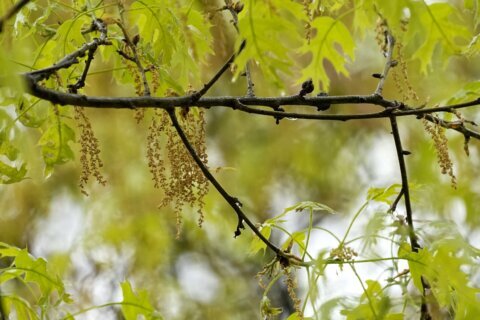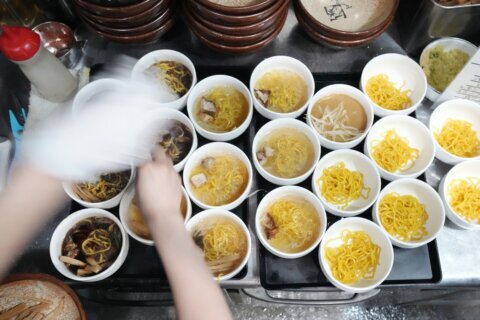
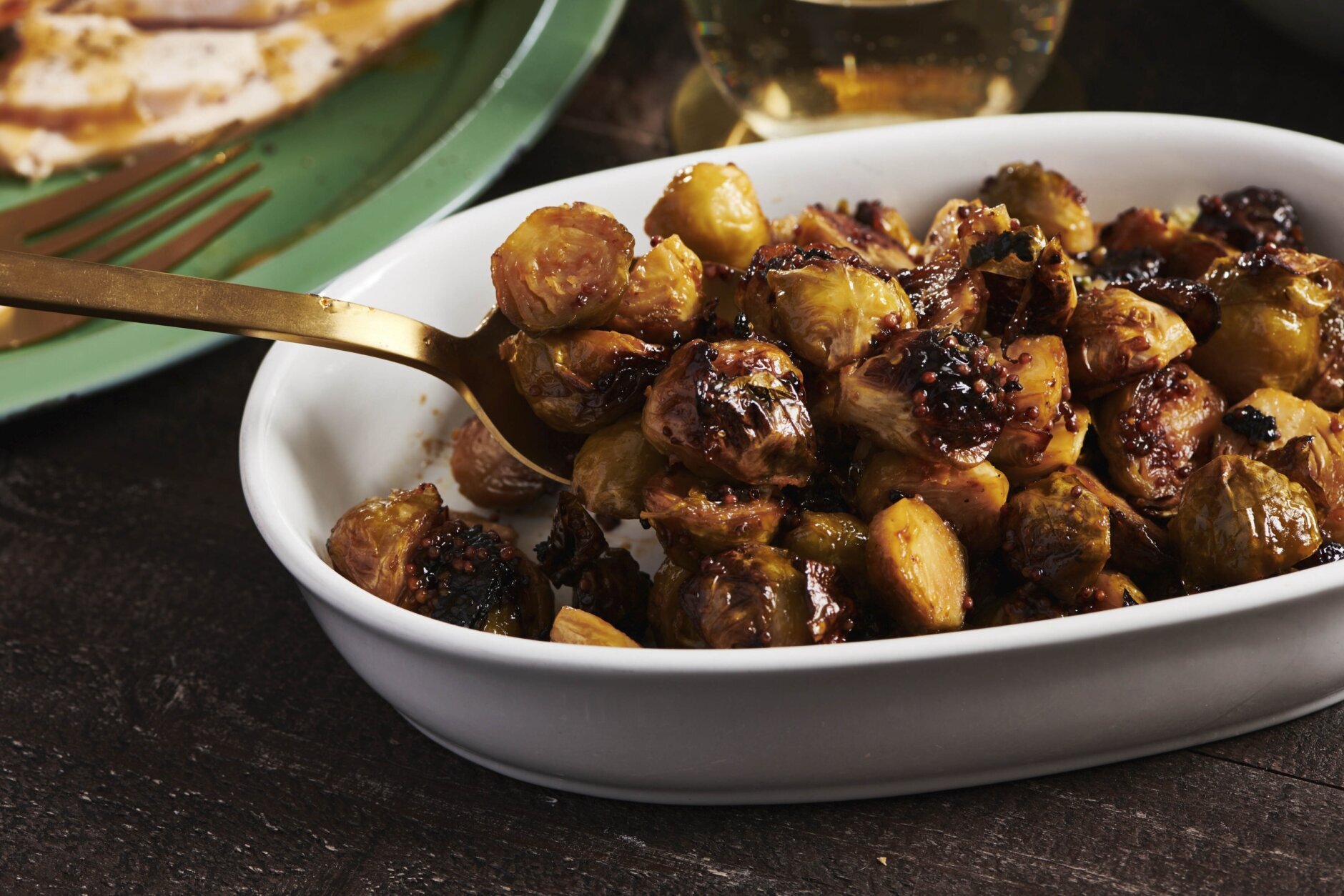
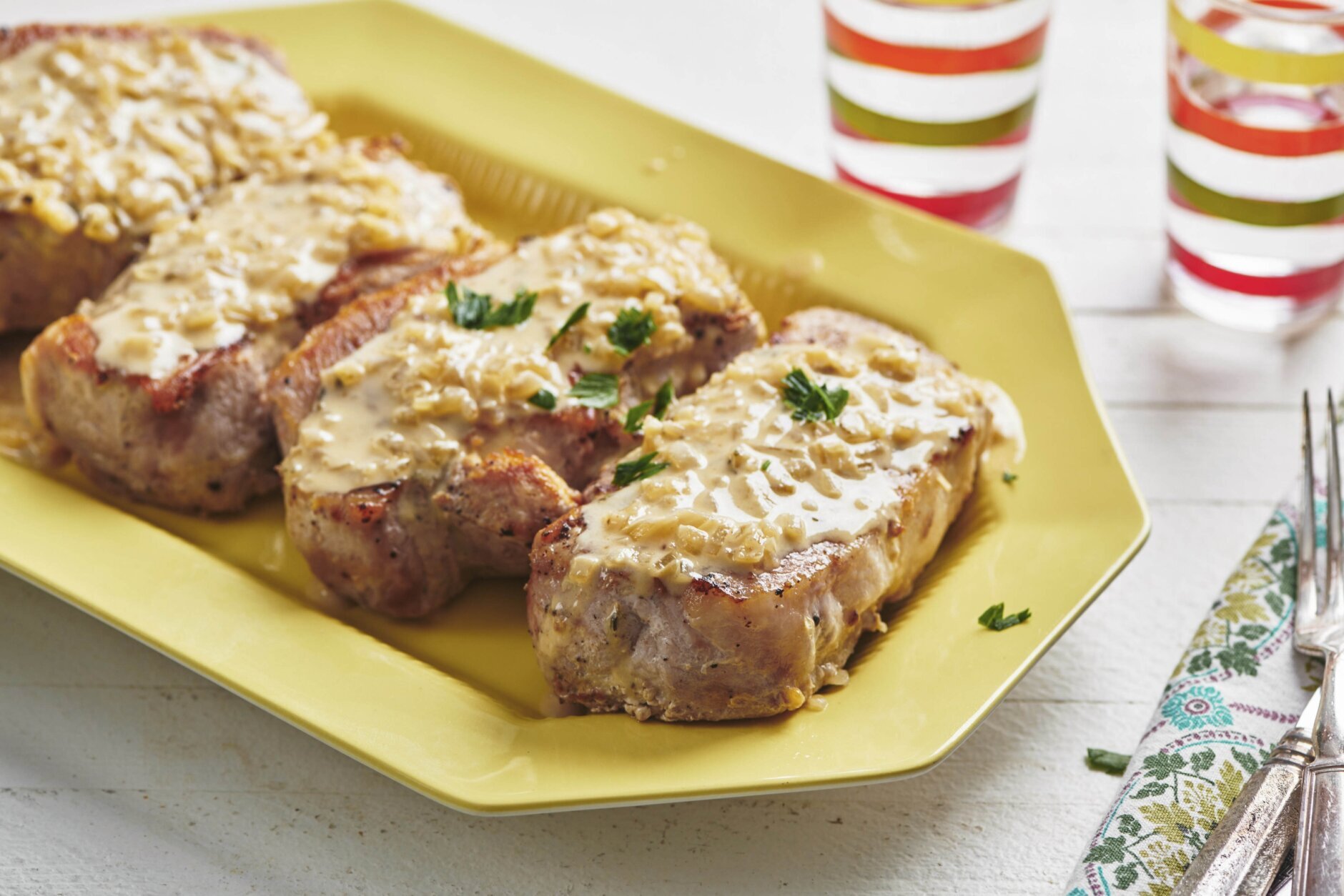
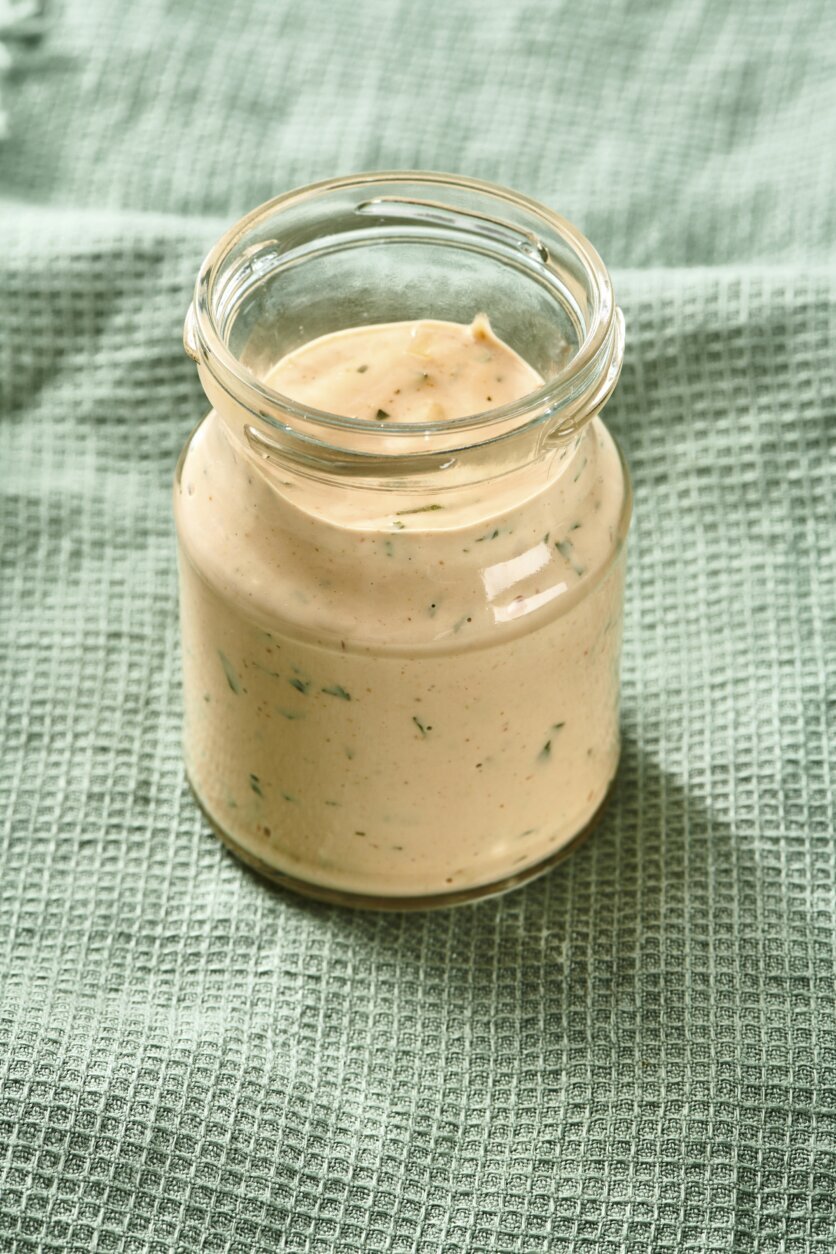
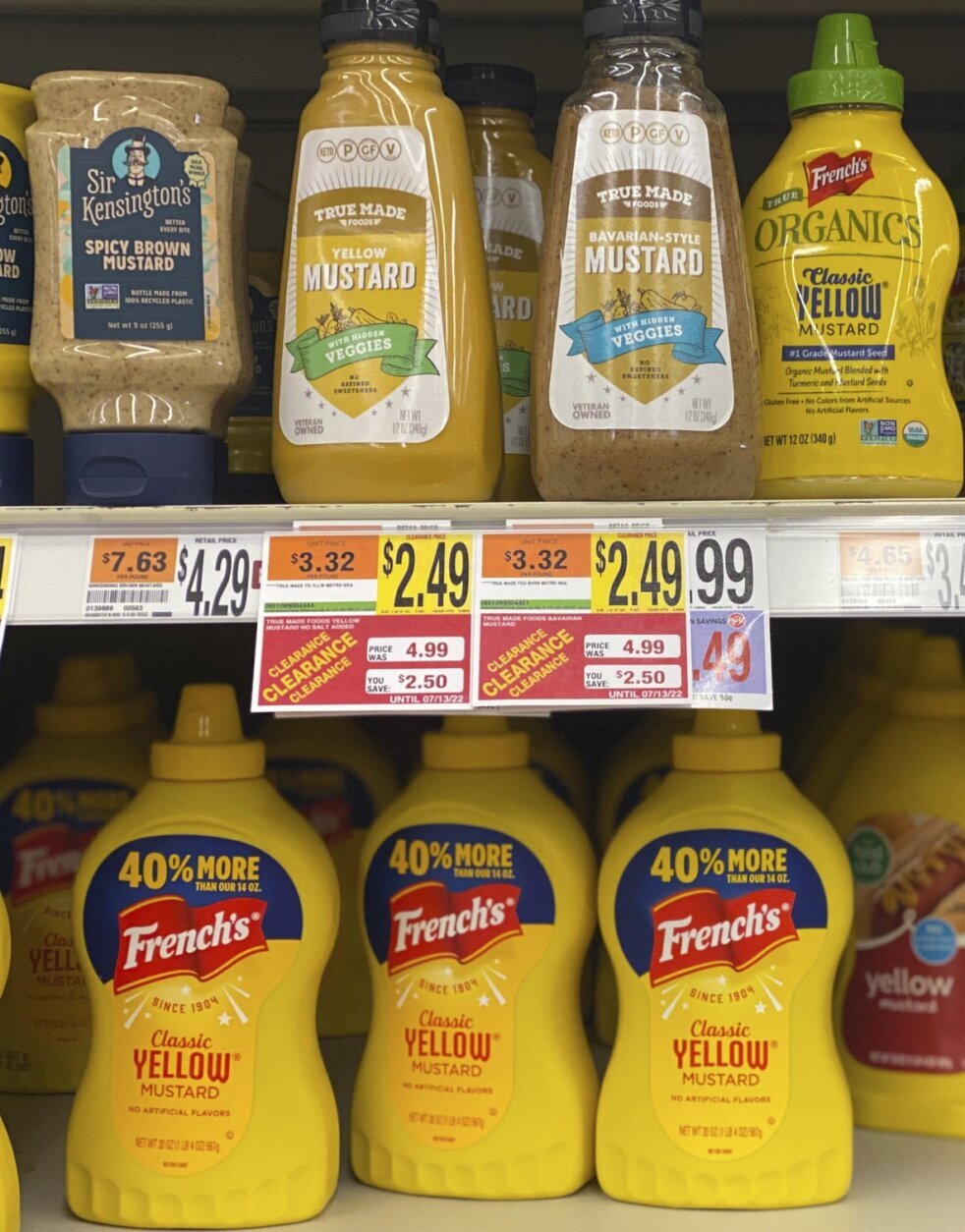

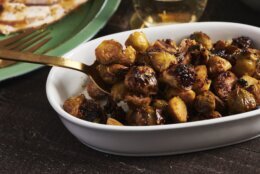

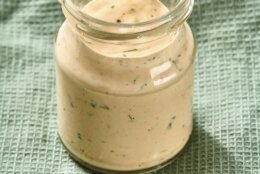

Good old mustard. One of my favorite condiments in the world; I have at least three different open jars at any given time.
Yes, it’s amazing on sandwiches. Burgers. Hot dogs. Pigs in a blanket.
But there’s more to the world of mustard, and once you start exploring it, your cooking world will pop open in exciting ways.
Mustard appears in my daily cooking in amounts large and small. I use it in everything from macaroni and cheese to salad dressing to sauces to marinades. It adds brightness, acidity and dimension to all kinds of dishes.
The mustard plant is a member of the brassica family, which includes broccoli, cabbage and cauliflower. Its leaves are edible, usually cooked, as are its flowers. But it’s the seeds that are the base of the condiment we know and love. They are blended with water, something acidic (like vinegar or lemon juice), sometimes wine or beer or another liquid, salt, and other flavorings and spices.
Mustard seeds comes in a variety of colors, sizes and pungencies. Yellow mustard seeds are the most common; they are the largest and mildest type of seeds. Then there are brown mustard seeds, the most pungent. The sharpest mustard varieties are made with the brown seeds, including mustards made in the Chinese, German and English styles. There are also black mustard seeds, which have a distinctive sharp flavor. These are often used in Indian cooking, but can also be blended into prepared mustards.
Mustard appears in cuisines throughout the Americas, Asia (China and India in particular), Africa and Europe.
TYPES OF MUSTARD
The prepared mustard we see on supermarket shelves falls into three basic categories: yellow, brown and Dijon.
Dijon mustard originated in Dijon France, though it is also made in other parts of the world now. The key ingredient (other than mustard seeds) is white wine, and the flavor is appealingly peppery-hot. It comes in a variety of grinds and flavors.
Brown mustard is popular in the U.S. on sandwiches, and accompanying cold or warm meat.
Stone ground mustards bring great flavor and an appealing nubby texture, since some or all of the seeds are left intact or just slightly crushed. These also might be labeled coarse ground or whole grain mustards. You might find brown or Dijon mustards made in stone ground varieties.
Prepared yellow mustard is mild, and may contain a higher level of sugar and extraneous ingredients. It’s often bright yellow (I seem to end up eating it when I am wearing white jeans), and is often squirted on ballpark or backyard burgers and dogs, or spread on a ham and cheese-type sandwich.
Chinese mustard is usually made from mustard powder with a small amount of other ingredients, resulting in a thin, sharp (sinus-clearing!) mustard. You can find it in specialty stores and Asian sections of well-stocked grocery stores.
And flavored mustards abound, usually made from brown or Dijon mustards with other ingredients added, from herbs to curry.
HOW TO USE THEM
One of the easiest ways to start playing with mustards in your cooking is to add them to sauces and vinaigrettes.
Mustard adds to a vinaigrette in two ways: It adds heat, flavor and dimension, and it helps emulsify or thicken the dressing. According to Rick Rogers, author of “Tips Cooks Love,” “mustard can absorb about twice its weight in liquid, so as it soaks up the vinegar and oil, it helps emulsify these two very different ingredients.”
If a recipe calls for one type of mustard but you only have another, you can usually make the substitution. Just keep in mind that different mustards have different strengths, and adjust the amount proportionately, to taste.
And now, a pitch for seeking out and buying local mustards! When we travel, it’s always fun to pick up a new jam, jelly, chutney, etc. at a regional specialty market. Don’t overlook the mustard section.
There are lots of local mustards being made with all sort of twists and idiosyncrasies. Recently, I picked up a bar of Fat Crow Gourmet mustard at a store that sells only products made in New York State, and it was terrific. It’s made with New York craft beer; they recommend trying it on pastrami.
Or check out a specialty food site, like Mouth.com. I’m planning on sampling Tin Mustard Smooth Whole Grain Mustard, made with a hit of cider vinegar; the creator, Tin Dizdarevic, compares the texture to caviar. They also made a whole grain version, and one made with Brooklyn-brewed amber beer. The Black Truffle Mustard from Mustard and Co. is recommended to pair with soft-boiled eggs or as part of a cheese and charcuterie plate.
Wilder Condiments offers Sweet and Hot Mustard created by chef Isabel Freed as the sophisticated version of yellow mustard, designed to add kick to brats and sausages, but also ideal for many other uses, such as a dip for grilled vegetables. Brooklyn Delhi makes a curry mustard with cumin, paprika and tamarind.
So, why did the mustard blush? Because it saw the ranch dressing.
Ba dum bump. OK, grab that jar from the fridge door and put it to work!
—-
Sample recipes that use mustard:
Basic Vinaigrette
Mustard Marinated London Broil
Roasted Honey Mustard Brussels Sprouts
Roasted Chicken with Orange Honey Mustard Glaze
Copyright © 2024 The Associated Press. All rights reserved. This material may not be published, broadcast, written or redistributed.

